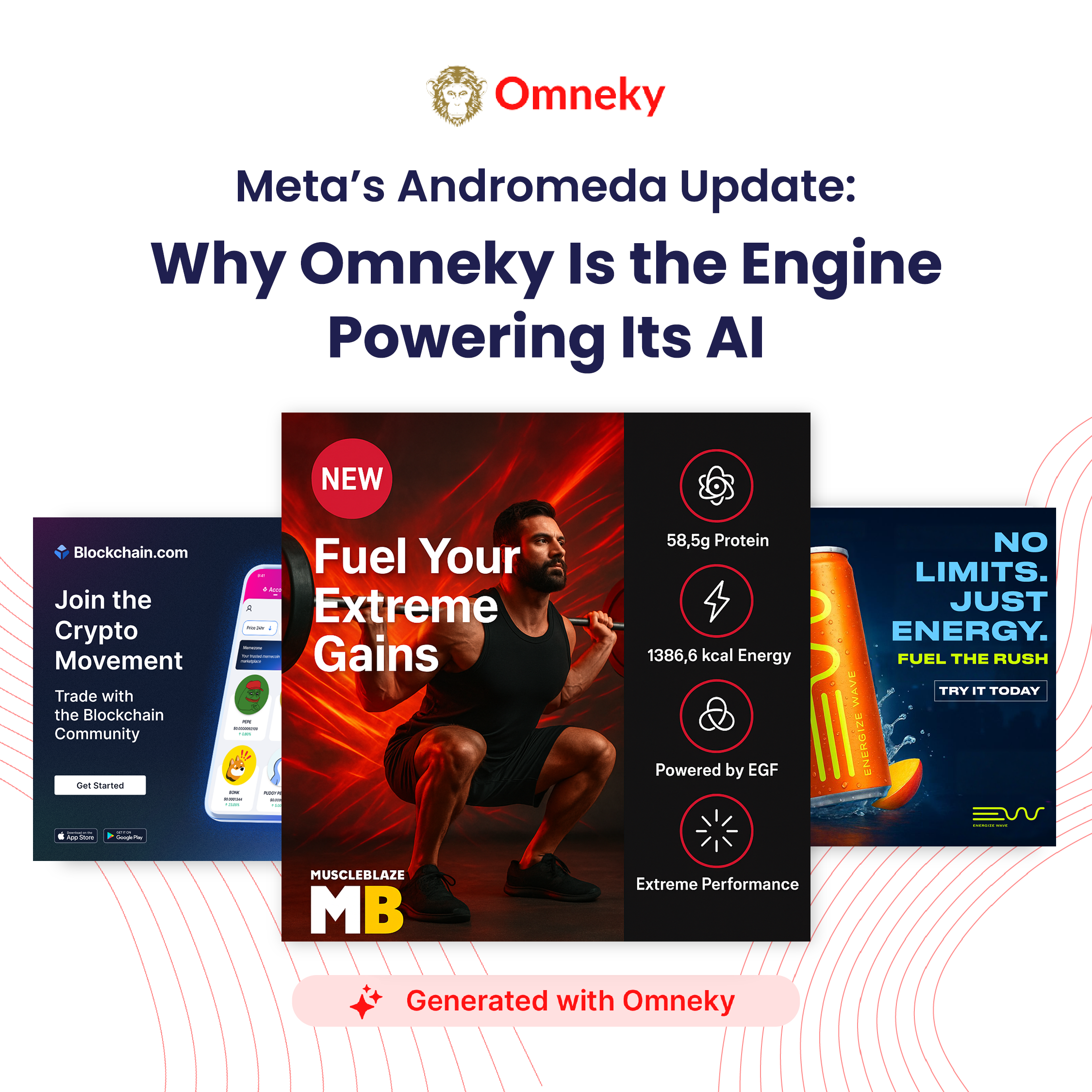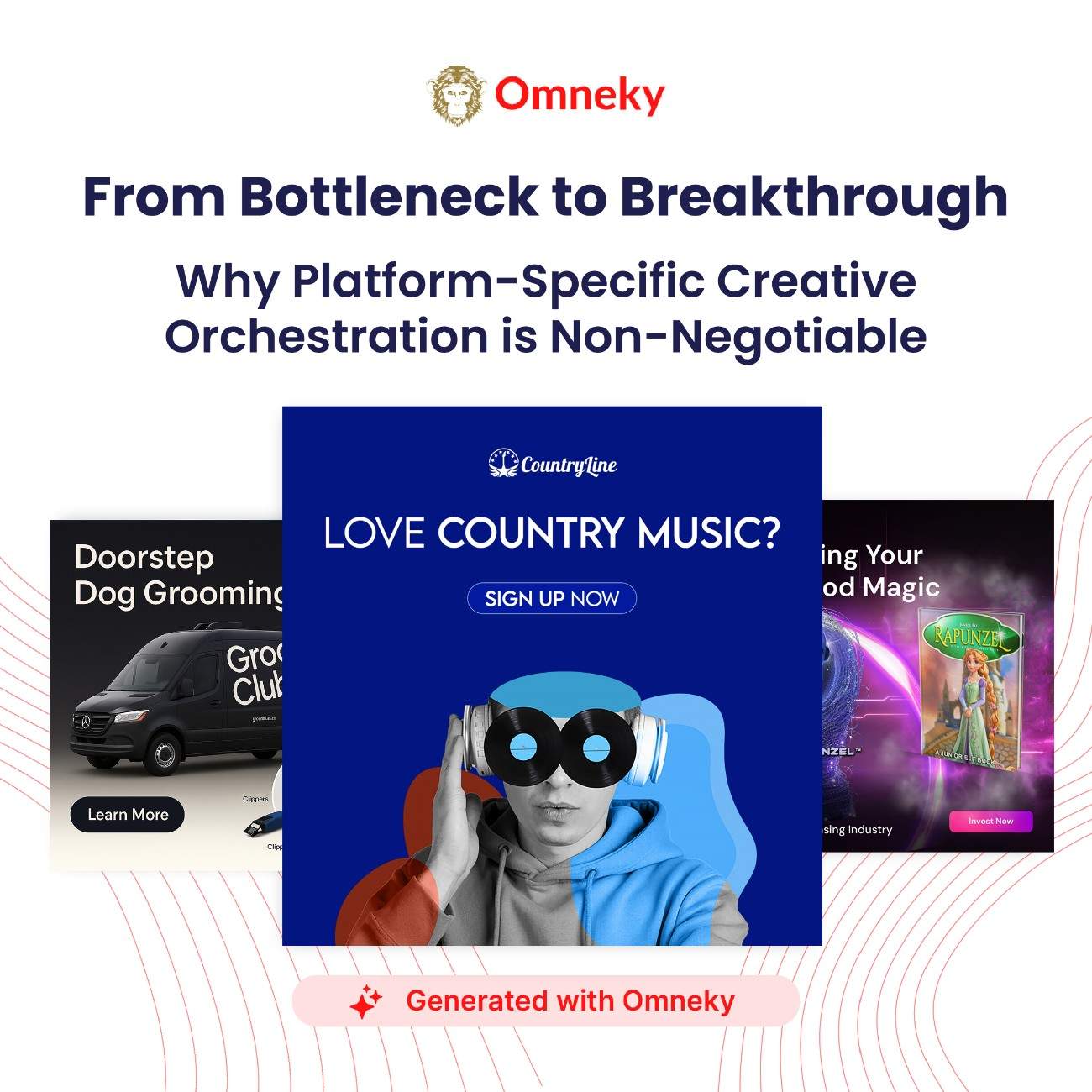How AI Image Generation is Changing the Face of Advertising
As AI image generators revolutionize creative industries, marketers are harnessing their potential to streamline ad creation, boost efficiency, and cut costs. With tools like Stable Diffusion and Product Generation Pro by Omneky, discover how businesses are adapting to this powerful tech while navigating ethical concerns and human-AI collaboration.

Artificial intelligence (AI) is everywhere today, and its potential to revolutionize creative fields is only growing thanks to the rise of generative AI tools. These tools span the gamut of creative expression: when it comes to written content, ChatGPT and Jasper have emerged as preeminent for AI-generated content (AIGC); meanwhile, image generator apps like Stable Diffusion from Runway use text-to-image modeling to synthesize bespoke visual content on the fly.
If you aren’t prepared for the age of AI, you may find yourself falling behind your competitors. Let’s explore how AI image generators specifically are impacting the world of creative advertising.

How AI Image Generators Help Advertisers
An AI image generator specializes in processing data and using it to create something new. Think of ChatGPT, for example. After you give it a prompt, it scours the data it’s been fed and then uses it to generate a response. That response is a new string of text “written” by the AI.
Some AI can do this with images as well. Predictably, many fields are already using AI image generators. They’re particularly valuable to marketers and advertisers, as visual elements are an important part of capturing your customers’ attention. A visually appealing advertisement stands out from the crowd. With the right tools, you can easily create eye-catching AI-generated images that retain your business’ branding.
The speed at which generative AI works is also important for ad optimization. You’re not going to get things right on your first attempt. But with an AI image generator, you can quickly produce multiple versions of images to find the best ones to use in your ads.
Because AI can produce high-quality images faster than any human, advertisers can also save lots of money. The cost-effectiveness of AI image generators is especially important to small businesses with limited budgets. Fortunately, these tools are also highly scalable, meaning they can keep up with the demands of the business no matter how rapidly it grows.
There are a few AI image generators on the market, including Kartiv, Stable Diffusion, Midjourney, and DALL-E. Product Generation Pro by Omneky is a powerful AI image generator that can create product images, making it ideal for advertisers and marketers.
Are AI Image Generators a Boon or a Curse for Creatives?
AI image generators have numerous advantages. For instance, they’re far more efficient than a human, as they can generate high-quality images with fewer errors at a faster rate. The app is also easy to use and requires minimal training.
What’s more, creatives have fewer constraints when using an AI image generator. In fact, many have multiple customization options, so you can input specific parameters to create the exact image you want.
AI image generators can also spark creativity. Let the AI tools come up with some concept images to get the ball rolling. Then, artists can take it from there to make the imagery perfect. With humans and AI working together, you can produce ads and other marketing collateral tailored to your target audience.
The Downsides of Using AI
While AI brings numerous benefits to creatives, you should also consider the possible negative aspects of AI image generators. First, there’s the fear that AI will replace humans entirely. This isn’t yet the case—as it stands, an AI image generator still needs human input to steer it in the correct course. In addition, a human must vet and possibly edit the end product to ensure that it adheres to brand guidelines, is not overly duplicative (after all, AIGC is an exercise in pastiche), and is visually flawless.
So, when implementing AI image generators, don’t think of them as replacements for the human workforce. Instead, think of them as assistants. For example, you can use an AI image generator to automate tedious tasks associated with creating images, such as changing background colors.
What’s more, remember that no AI image generator is perfect. Sometimes they make errors and produce imperfect images. Take AI’s struggle to create human hands. AI doesn’t actually know what it’s creating—it’s simply using the data that it’s been fed to respond to prompts. Once again, humans are vital to this creative process. They’re the only ones who can spot and correct errors.

Ethical Concerns in Using AI Image Generators
Obviously, AI image generators have exciting potential. They can vastly improve efficiency in the workplace and help you create stunning creatives for advertising. However, there are ethical concerns that arise from the use of this technology.
The most significant concern surrounds copyright issues and plagiarism. Unlike a human, an AI image generator can’t create images from nothing. Instead, they must be fed data. If you use someone else’s intellectual property to train the AI, the images it produces could mimic the style of an existing artist. This could be considered unethical, as the original artist isn’t getting compensated for use of their work. The issue is so prominent, in fact, that the site HaveIBeenTrained.com exists to help artists check whether their work has been used to train AI.
It’s also worth considering what the future holds. As AI technology advances, you can expect to see generative AI become more realistic. This brings into question what the artistic landscape will eventually look like. Will AI dominate creative fields? Will human artists be pushed out of these positions altogether? These concerns will grow increasingly important as technology improves.
Finally, humans value authenticity. And while it may not seem particularly important, this is something AI simply can’t recreate. Do you value authentic art enough to continue using it, even when AI is cheaper and faster? Or would you prefer the more efficient and cost-effective AI, even if the art is missing human creativity? Would you like to find a midpoint between the two and produce hybrid content, with human operators enhancing or tweaking AIGC (or AI serving as an assistant for fundamentally human-generated content)? You’ll have to decide where you fall on the matter.
Dynamic Creative Optimization: The Future of Advertising Is Here
AI image generation is too powerful for advertisers and other creatives to ignore. Its cost-effective nature allows you to redirect your resources to other aspects of your marketing. Whether you’re a small business trying to grow or a large company interested in trying new things, AI can help.
AI tools won’t replace your human employees. Instead, the tools will help them work more quickly and efficiently. If you’re ready to explore how an AI image generator can take your business to the next level, consider Omneky.
To learn more, sign-up for a free demo of the Omneky platform today.



